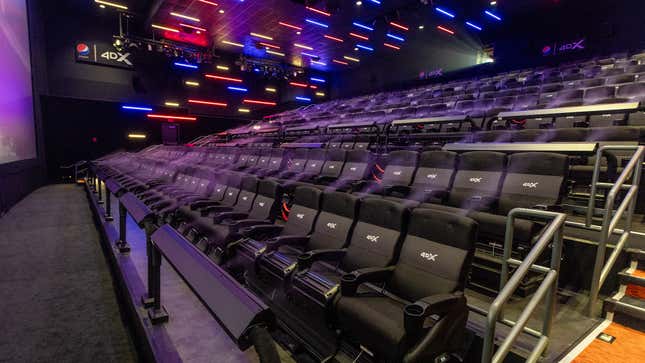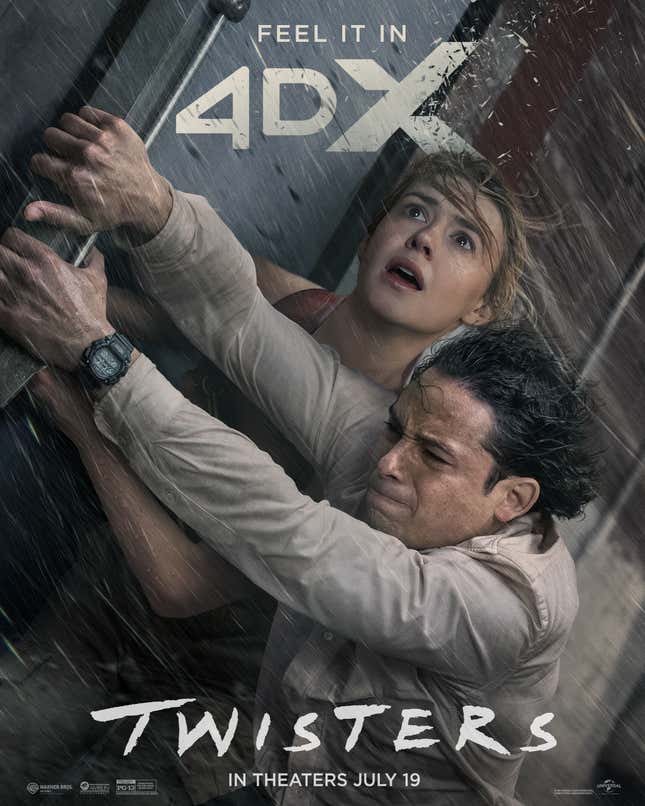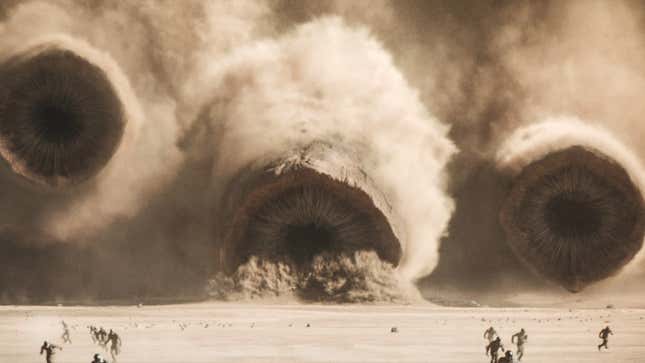A few weeks back, I left a screening of Twisters in 4DX (a multi-sensory experience in which your seat moves, water sprays in your face, wind whips your hair, and flashing lights mimic lightning) feeling like I had just ridden the wildest roller coaster at Six Flags. A giddy grin remained plastered on my face for hours after the movie ended, and I immediately sat down to write about it. I even bought tickets for the upcoming release of the original film, Twister, in the same format.
I wasn’t the only person who fell in love with this theatrical format: Twisters 4DX viewings powered its impressive box office performance—the technology, though more than 15 years old, is so well-suited for a tornado movie that, according to Variety, “inaugural ticket sales…were roughly $2.1 million…30% higher than the format’s previous opening weekend record holder, 2023’s Super Mario Bros. Movie.” But how are 4DX screenings created and programmed? And how did this exhilarating way to watch movies come to be? I sat down with Paul Kim, senior vice president of content and production at CJ 4DPLEX, a Seoul-based cinema tech company pioneering the medium, to find out more about the technology and the impressive team behind it.
The rise of 4DX
“Movies are a huge part of the entertainment culture in Korea,” Kim says over video call. “We had so many big movie theaters that ran 24 hours a day, because people go to see them at four in the morning. And any sort of new technology, a new way to view movies, [the Korean audience is] always leading into it. 4DX just made a lot of sense.”
The first 4DX movie was 2009’s largely forgotten Journey to the Center of the Earth, shown at the CGV Sangam theater in Seoul, South Korea. But the popularity of the medium skyrocketed after Avatar debuted in the same theater several months later—since then, the 4DX team has coded “close to 80 films a year,” according to Kim. Part of the allure of a 4DX viewing (which Kim admits “isn’t for everyone”) is the immersiveness, but he suggests there’s something else that makes it extra-special.

“You’ll sit down and there’s always a good amount of people who have never seen a film in 4DX, and the first thing or shake happens and you just hear giggles throughout the entire theater, and that’s almost cathartic, right?” He continues, “That’s the whole point, you’re in a movie theater, you’re there to enjoy yourself, and everyone’s looking around saying ‘is it okay for me to laugh, is it okay for me to enjoy it that much?’ But everyone’s doing that, and it becomes this communal thing.”
There are currently 678 4DX theaters spanning 65 countries, and though America didn’t get its first one until 2014, it currently has the biggest one in the world: Regal Times Square, which boasts nearly 300 seats (an impressive feat considering how large 4DX chairs have to be). I tell Kim this is where I saw Twisters. “It’s massive. Unheard of,” he says, smiling.
How 4DX movie screenings are made
There’s something I am desperate to understand about 4DX, something that’s been nagging me since I walked out of that theater blissfully dazed: how the hell the movies are programmed. It would certainly seem like such a massive, global corporation would utilize the highest-end tech to streamline and speed up the process of translating a film to the 4DX format, but Kim assures me it’s far more bespoke than that.
“There’s a misconception that this is an automated process of sorts. It’s not. We have a full team of artists, or editors as we like to call them, that work on every 4DX film,” Kim explains. “We get the final cut of the film, or even sometimes a work-in-progress version, weeks before the initial release. Our editors will then sit down in front of their computers, we have software that works with our equipment, and they will go scene-by-scene. At times, when there’s a lot of action like in Twisters, they’ll go frame-by-frame if necessary to ensure that every little bump of the truck, every lightning strike, matches and syncs properly. I have to give credit to the team because it is such a creative process, it’s not just something that happens, it takes a lot of time and work and labor and effort.”

Kim outlines the opening Twisters sequence, and how the team designed the 4DX experience for it. “There’s a calm before the storm where you’re introduced to the characters in their trucks. And as the tornado started to build up, we had to think about, ‘well, who’s the character right now that we want to emphasize? Is that the truck driving away from the tornado or the tornado [itself]?’ And at a certain point we decided, ‘okay, the truck we’re going to de-emphasize, because right now it’s all about the tornado,’,” he explains. “It’s just about which character we want to highlight—and by character, it doesn’t necessarily have to be a human character.”
It takes the 4DX editors about two weeks to program the experience for a two-hour film. “On average, you have two teams working on this,” Kim says. “One team works specifically on the chairs, the motion of them and the vibrations. The other team then layers on top the effects, the water, the air, the strobe lights, the fog, all of that. And then there is an art director, or as we call them, the lead producer. And they watch all of that, like a conductor of an orchestra, and make sure all of the pieces work together cohesively and are additive to the story.”
The 4DX team then brings in a producer on the film to see the final cut and offer suggestions. Kim says this part of the process is always incredibly fruitful, like with Dune: Part Two, which released earlier this year. “There’s a sequence where there’s a device right, a thumper to call the sandworms. And when there’s a close-up of the thumper, we added a vibration in the seats. But when it’s away and you don’t see it, we stopped that vibration because it was no longer on-screen. One of the Dune editors came in and said, ‘you know what would be really cool? Even if it’s not on screen, just keep it thumping, keep the vibration going…it’s in the background, you know it’s happening, there’s a sandworm, you know it’s coming, but it gives that little extra bit of anticipation and suspense.’ That was the coolest idea ever.”

Before our conversation ends, Kim tells me another anecdote to prove just how much creative juice goes into 4DX screenings. “I was in Korea with a team back in June, and I was sitting with our lead producer. She’s been coding or editing 4DX films for 15 years, she’s done over 315 by herself, she knows this thing inside and out,” he says. “And she was telling me that she bought a gyroscope and accelerometer for Godzilla Minus One, a lot of which takes place on boats or ships. She rented a boat and went out with the gyroscope to see how much it would sway, and she went go-kart racing with the accelerometer to see how much force is applied when turning tight curves. It’s not just, ‘okay it looks like it’s turning left, so let’s make the chairs turn left.’ It’s the nuance, there’s a real sense of genuine care that goes into designing 4DX for every film.”
Kim tells me that Twisters in 4DX was a “match made in heaven,” but the team was still pleasantly surprised at the hype. “It just took with audiences, it made sense, as you said, it’s a perfect storm.” But he thinks there’s another new movie that is a must-see in the 4DX: Alien: Romulus. “I highly recommend you see that in 4DX,” he says, grinning mischievously.
.


